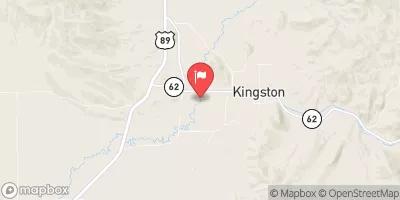Summary
The basin is home to several high-elevation lakes that offer excellent fishing opportunities for various species of trout.
The most prevalent fish species in Dougherty Basin are brook trout, cutthroat trout, and rainbow trout. These fish are known for their feisty fight and delicious taste, making them a favorite among anglers. The lakes in the basin are relatively small, which means that fishing from shore or a float tube is the most effective method.
Aside from fishing, Dougherty Basin offers several outdoor activities such as hiking, camping, and wildlife watching. The area is also known for its scenic beauty, with its alpine lakes, towering peaks, and lush meadows.
For those planning to fish in Dougherty Basin, here are some useful tips:
- Use lightweight fishing gear and bring a variety of lures and baits.
- Fish early in the morning or late in the evening when the fish are most active.
- Look for areas with cover such as logs, rocks, or weed beds where fish tend to congregate.
- Practice catch and release to conserve the fish population.
The best time to visit Dougherty Basin for fishing is from late June to early September. The average temperature during this time is around 70°F during the day, with cool nights. It's important to note that the weather in the mountains can be unpredictable, so it's best to come prepared with warm clothing and rain gear.
Weather Forecast
Nearby Streamflow Levels
Angling Safety Guidelines
Check local fishing rules, seasons, size limits, and license requirements to ensure legal and sustainable angling.
Handle Fish Responsibly
Use wet hands, minimize air exposure, and release fish gently to improve survival rates when practicing catch-and-release.
Choose the Right Gear
Match your rod, line, and tackle to the species and conditions to increase success and reduce unnecessary harm to fish.
Respect the Waterway
Avoid disturbing habitat, prevent bank erosion, and keep a safe distance from spawning areas to protect ecosystems.
Keep It Clean
Pack out all line, hooks, bait containers, and trash—discarded gear can injure wildlife and degrade waterways.
Related Links
Area Campgrounds
| Location | Reservations | Toilets |
|---|---|---|
 Barker Reservoir Area
Barker Reservoir Area
|
||
 Barker Recreation Area
Barker Recreation Area
|
||
 Posey Lake Campground
Posey Lake Campground
|
||
 Posy Lake
Posy Lake
|
||
 Blue Spruce Campground
Blue Spruce Campground
|
||
 Blue Spruce
Blue Spruce
|

 Upper Barker Reservoir
Upper Barker Reservoir
 Lower Barker Reservoir
Lower Barker Reservoir
 Flat Lake
Flat Lake
 Joe Lay Reservoir
Joe Lay Reservoir
 Long Willow Bottom
Long Willow Bottom






 Barker
Barker